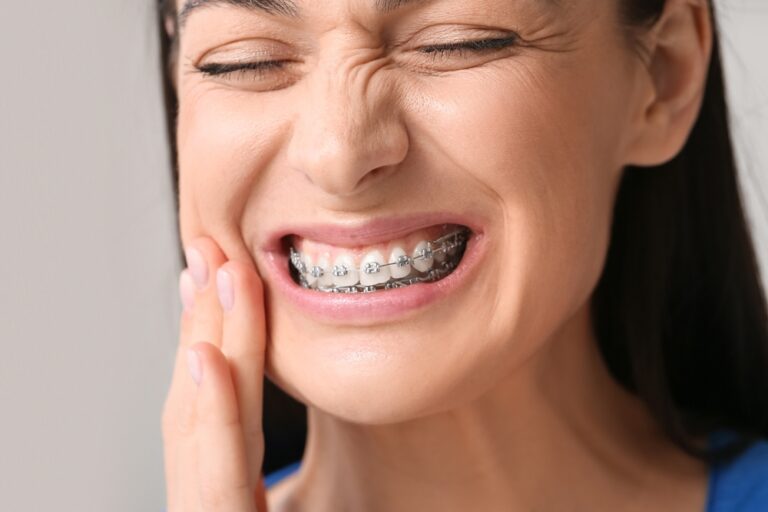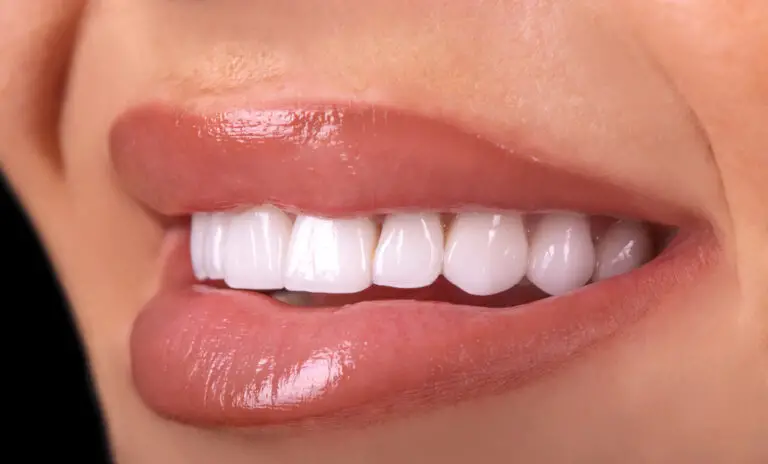Oral health is just as important for dogs as it is for humans. Unfortunately, an estimated 80% of dogs over age 3 have some form of dental disease. Left untreated, these conditions can lead to significant pain, permanent damage and even life-threatening illness in our canine companions. As caring pet owners, it’s our responsibility to understand the risks of dental disease in dogs and how to prevent it. In this comprehensive guide, we’ll explore the causes, symptoms, dangers and treatment options for maintaining your dog’s oral health.
What Causes Dental Disease in Dogs?
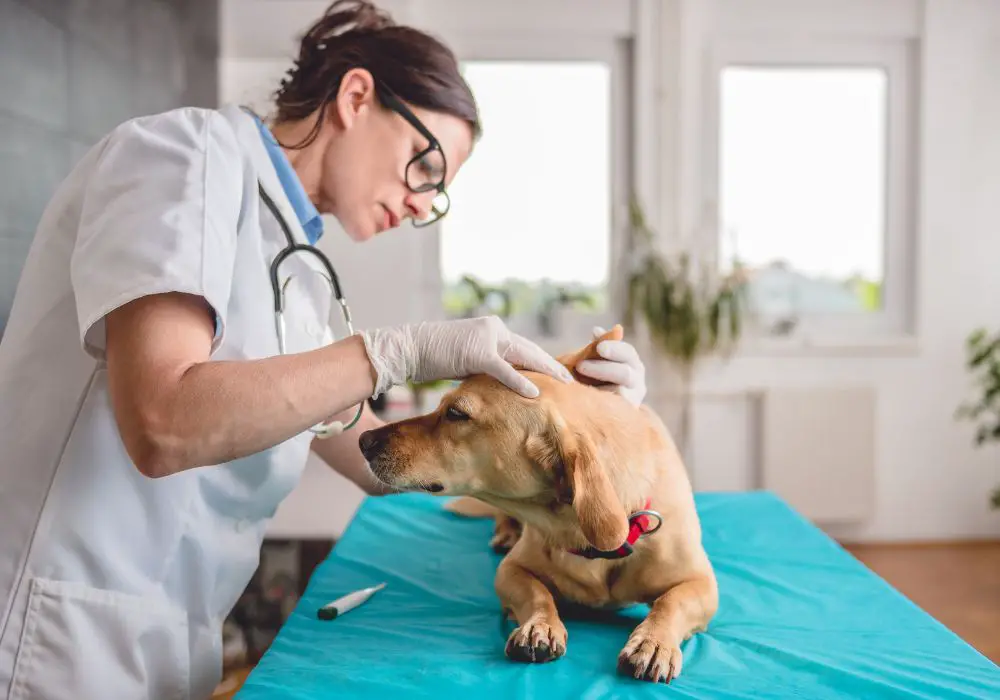
A number of factors can contribute to the development of dental disease in dogs:
Bacterial Plaque Buildup
Plaque is a sticky film of bacteria that accumulates on a dog’s teeth. Within just 48 hours, plaque can start to harden into tartar through mineralization. Tartar provides rough surface for even more plaque to accumulate and shelters bacteria from the mechanical cleaning action of a dog’s chewing and tongue.
Poor Dental Anatomy
Brachycephalic (short-nosed) dog breeds like Bulldogs, Boxers and Pugs often have misaligned teeth and other anatomical factors that make plaque removal difficult. Their tooth alignment also predisposes them to early onset periodontal disease.
Diet
Dry kibble and treats help scrape away some plaque as dogs chew, while wet foods do not provide any cleansing friction. Feeding only canned food can allow plaque to build up faster.
Genetics
Some breeds may be genetically prone to plaque buildup or gum infections. For example, poodles and cocker spaniels are at higher risk for periodontal disease.
Poor Oral Care
Lack of regular tooth brushing, dental cleanings and oral exams contributes greatly to dental disease in dogs. Many owners neglect their dog’s oral health, allowing plaque and tartar to accumulate unchecked.
Medical Conditions
Endocrine disorders like diabetes or Cushing’s disease can accelerate dental disease. Immune system diseases may also increase susceptibility to oral infections.
Age
As dogs age, their teeth accumulate more plaque, tartar and damage over time. Older dogs are more likely to suffer from dental disease than younger dogs who have not yet built up plaque or suffered tooth decay.
What Are the Symptoms of Dental Problems in Dogs?
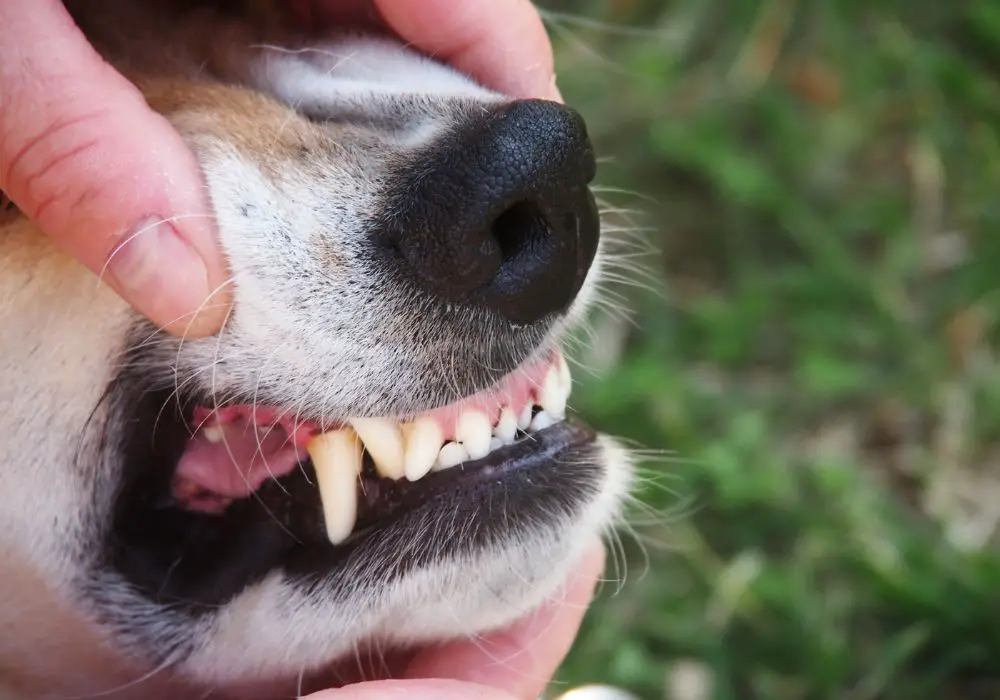
Dental disease progresses through several stages, each with their own symptoms:
Gingivitis
The earliest stage is gingivitis — inflammation of the gums around the base of the teeth. Symptoms include:
- Swollen, discolored gums
- Bad breath (halitosis)
- Bleeding from the gums
- Increased drooling
- Pain or sensitivity around the mouth
Periodontitis
Without treatment, gingivitis can advance to periodontitis — infection and inflammation of the ligaments and bone supporting the teeth. Signs include:
- Loose or separating teeth
- Pus discharge from around teeth
- Receding gums
- Damage to tooth sockets and jawbone
- Tooth loss
- Nasal discharge from tooth root abscess
Periapical Abscess
Decay deep within a tooth can allow bacteria to infect the pulp (nerves and blood vessels) forming an abscess at the tooth root. A periapical abscess can cause:
- Swelling of the face around the affected tooth
- Draining wound tract from the abscess
- Loss of appetite
- Pain when opening the mouth
- Rubbing or pawing at the face
The Dangers of Advanced Dental Disease
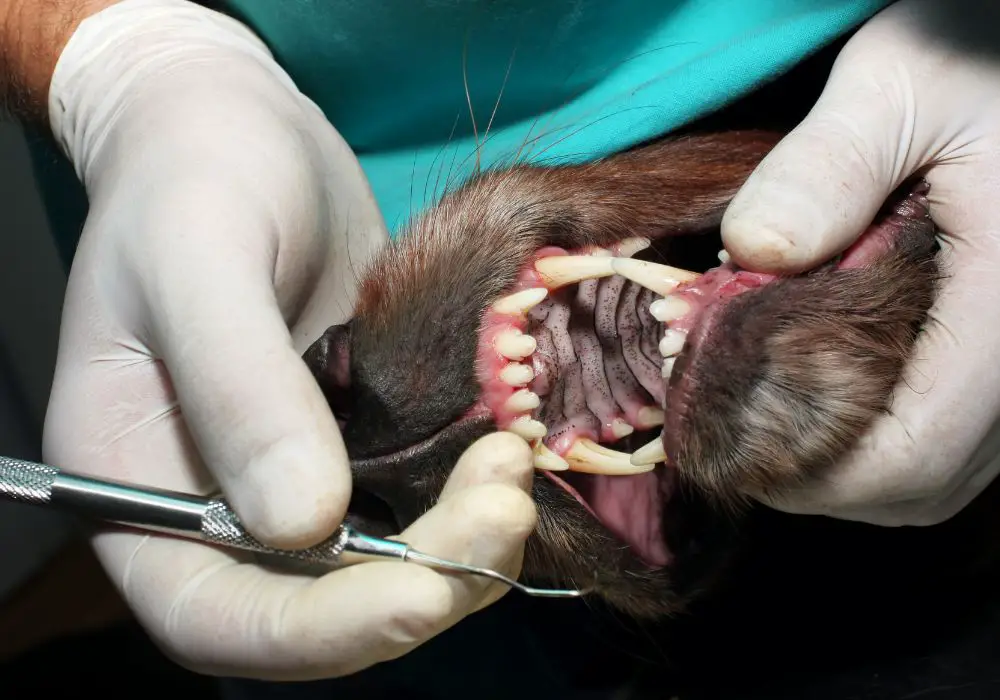
Without treatment, dental infections will continue to spread in a dog’s mouth and body with serious consequences:
Difficulty Eating
Loose, damaged or missing teeth make it harder for a dog to pick up and chew food properly. Dogs may drop food, refuse dry kibble or lose dangerous amounts of weight.
Intense Pain
Dental infections expose nerves and bone, creating severe mouth pain. Dogs may whine, paw at their face or stop wanting to eat due to discomfort.
Tooth Loss
Periodontitis damages the tooth sockets, eventually causing tooth loss if untreated. Dogs may have trouble eating or injury if tooth fragments are swallowed.
Damage to Organs
Bacteria from advanced dental infections can spread through the bloodstream, potentially damaging major organs like the heart, kidneys and liver.
Heart, Liver and Kidney Disease
The bacteria released from gum infections can cause inflammation in vital organs like the heart and kidneys. Dental disease has been linked to chronic kidney disease and heart valve infections in dogs.
Weakened Immune System
Chronic dental infections tax the immune system, leaving dogs vulnerable to other illnesses. Bacteria can also travel to the bloodstream and lungs, increasing pneumonia risk.
Eye Injuries
Tooth root abscesses that erupt inward can potentially spread infection to the eye sockets, risking vision loss or removal of the eye.
Bone Damage in the Jaw
Periodontitis erodes the bones surrounding infected teeth. Severe bone loss can lead to tooth loss or fractured jaw bones.
Pain and Infection in Other Teeth
Bacteria rampantly colonize the plaque on neighboring teeth, spreading dental infections throughout the mouth. Soon nearly all teeth are at risk.
Professional Cleanings Are Crucial for Dog Dental Health
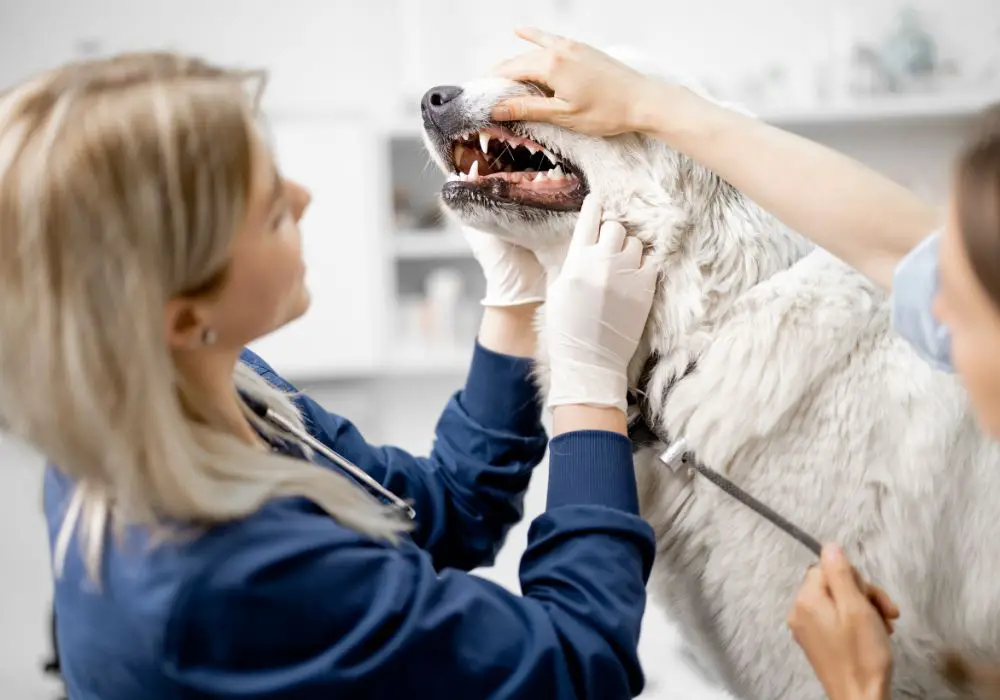
Regular dental cleanings and exams by a veterinarian are essential to controlling dental disease before it can endanger your dog’s health.
Professional veterinary cleanings include:
- General anesthesia to safely examine the entire mouth
- Full mouth dental x-rays to evaluate tooth roots and jaw bone
- Scaling to remove plaque and tartar above and below the gumline
- Polishing to smooth enamel and slow plaque buildup
Veterinarians will assess each tooth during cleaning and extract any that are damaged or infected beyond repair. Some clinics also offer preventative sealants applied to the grooves of back teeth.
The American Veterinary Medical Association (AVMA) recommends professional dental cleanings at least annually for most dogs. Dogs with suspected dental disease may need cleanings more frequently, such as every 6 months.
Annual cleanings can help detect dental problems early before they become complex infections requiring tooth extractions or other extensive treatment. They also reset the clock on plaque buildup for healthier teeth and gums.
Additional Preventative Care Measures for Dog Dental Health
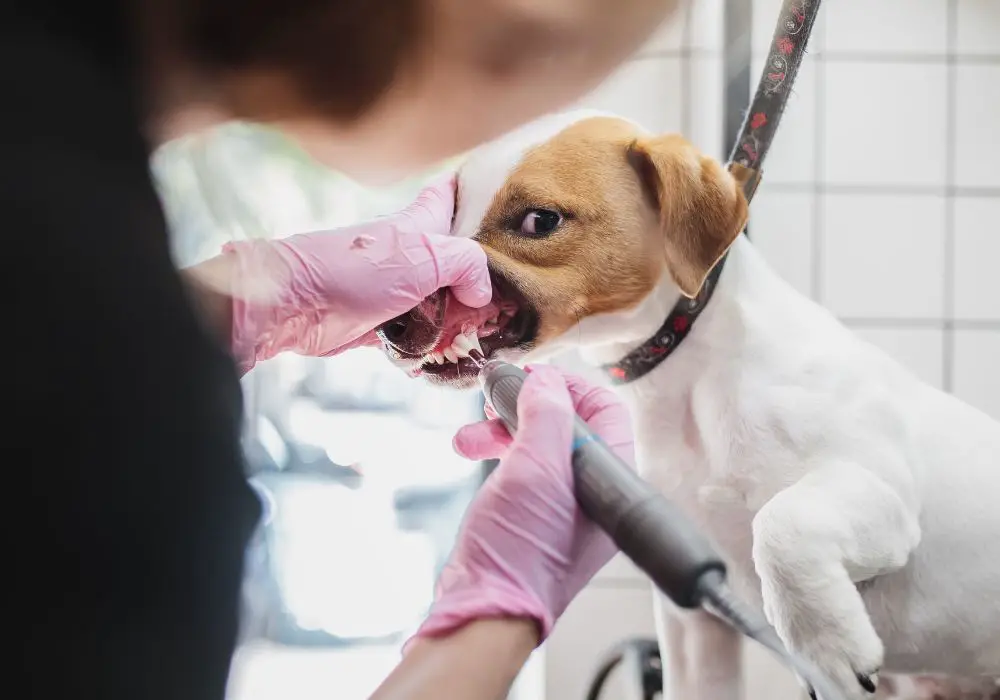
In addition to professional cleanings, pet owners can take steps at home to combat plaque buildup and keep their dog’s teeth cleaner between vet visits:
Brushing Your Dog’s Teeth
Daily tooth brushing removes plaque before it turns into tartar. Use dog-specific toothpaste and brushes from your veterinarian. Introduce slowly with positive rewards until your dog accepts daily brushing.
Dental Diets and Chews
Prescription dental diets and treats are formulated to mechanically scrape teeth as dogs chew. Options include dental kibble, chews, dental sticks and plaque-targeting water additives.
Oral Rinses
Antiseptic rinses containing chlorhexidine applied to the teeth, gums and tongue can help kill bacteria and slow plaque accumulation between brushings.
Regular Oral Exams
Check your dog’s teeth and gums weekly for any signs of dental disease. Look for plaques, tartar, redness, swelling or other changes. Contact your veterinarian if you notice anything abnormal.
Gnawing Raw Bones
Recreational raw bones from approved sources can provide some plaque removal action as dogs chew. Do not give cooked bones, which can splinter. Supervise to prevent choking.
Options for Treating Dental Infections in Dogs
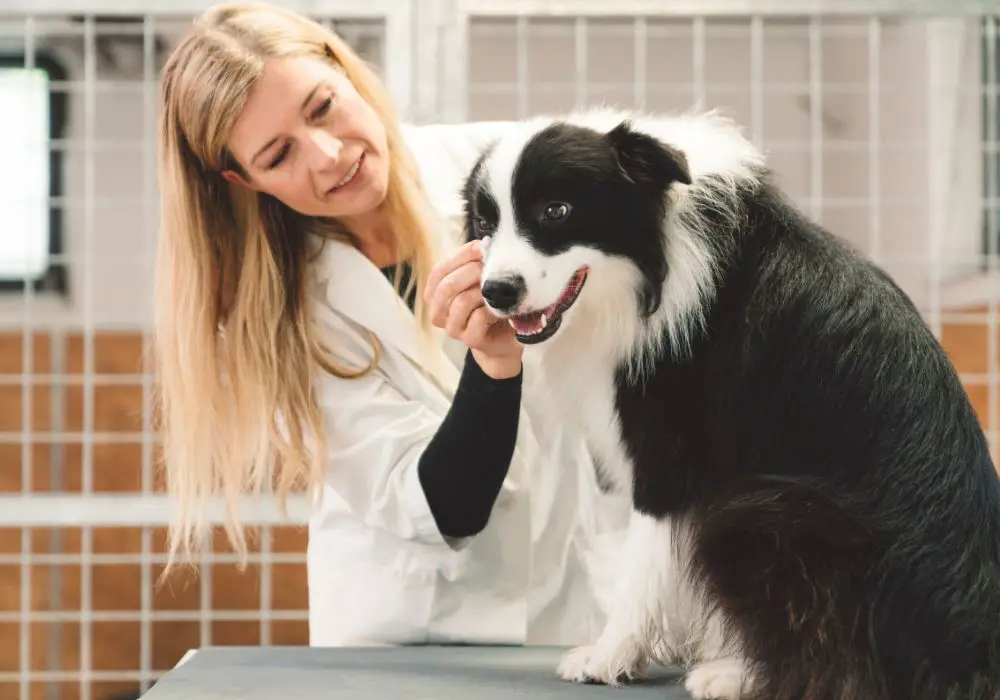
If your dog develops dental disease, your veterinarian will recommend the appropriate treatment plan based on the severity of infection.
Advanced Cleaning
Your vet may recommend a thorough dental cleaning and polishing under anesthesia to stop the disease process and enable comprehensive assessment and treatment of all teeth. Cleanings allow x-rays to evaluate tooth roots and below the gumline. The veterinarian can then extract severely damaged or infected teeth as needed.
Tooth Extractions
Teeth that are loose, severely decayed or have irreversible root infections often need extraction. This removes the source of infection and pain. Extractions frequently follow advanced dental cleanings to remove problem teeth identified through dental x-rays.
Root Canals
For compromised teeth that could heal with treatment, a root canal procedure may salvage the tooth. The pulp is removed and the root canal is sterilized and sealed. The tooth can then be restored with a crown.
Antibiotics and Anti-Inflammatory Medication
Antibiotics kill oral bacterial infections. Anti-inflammatory pain medication brings swelling and discomfort under control. These may be prescribed after dental procedures or for serious infections.
Home Care
Your vet will provide instructions for proper home dental care following any dental treatment. Brushing, oral rinses, dental diets and chews help maintain improvement. Prompt follow-up exams ensure complete healing.
The Importance of Regular Dental Care for Your Dog’s Health
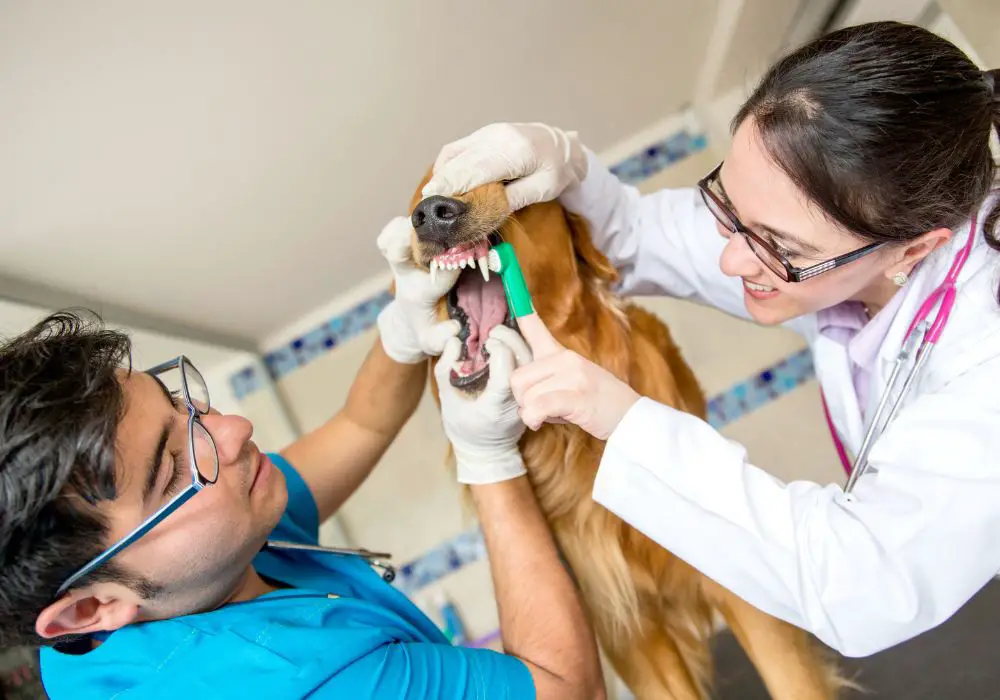
Dental disease is painful, destructive and far too common in dogs. But it’s also very preventable with vigilant home care and professional cleanings. Don’t take your dog’s oral health for granted—dental infections can silently lead to systemic illness. Schedule regular vet dental exams so problems can be addressed at early, treatable stages. With some effort on your part, your canine companion’s teeth and gums can stay healthy for years to come. Protect your dog from the misery of rotten teeth by making dental care a top priority.
Frequently Asked Questions
Why do some dogs get dental disease so young?
Certain breeds like Yorkshire Terriers and Pomeranians are genetically prone to early plaque buildup and gingivitis. Brachycephalic (short-nosed) dogs also tend to get dental disease younger due to their cramped tooth alignment. Diet, poor dental care and illnesses contributing to a weakened immune system can also accelerate dental infections in young dogs.
How is dental disease related to heart, liver and kidney problems in dogs?
Bacteria from advanced dental infections can enter the bloodstream and damage vital organs like the heart, kidneys and liver. The immune system response to oral bacteria also causes damaging inflammation in organs. Regular cleanings and good home dental care reduce these systemic health risks.
Can bad teeth make dogs stop eating?
Yes, dental pain and loose, infected teeth make it very difficult for dogs to pick up and chew food. Oral infections also cause decreased appetite. Dogs may lose interest in dry kibble and lose dangerous amounts of weight due to dental disease.
Do dogs really need anesthesia for dental cleanings?
Yes, general anesthesia allows complete examination of all tooth surfaces, below the gumline and between teeth. X-rays to evaluate tooth roots and jaw bone are also needed. It’s the only way to fully assess, clean and treat all areas of your dog’s mouth safely and thoroughly.
How can I get my dog comfortable with tooth brushing?
Go slowly with positive rewards like praise and treats. Let your dog sample the toothpaste. Gently rub the outside of their teeth and build up the number of teeth brushed over multiple sessions. Soon your dog will accept daily brushing as part of their routine. Consult your veterinarian on introducing dental home care.
Conclusion
Dental disease affects over 80% of dogs but starts out silently. Don’t take your dog’s oral health for granted. Know the signs of dental problems and be proactive about professional cleanings, exams and home care. With vigilance and veterinary guidance, you can prevent the unnecessary pain and health risks of advanced dental infections in your canine companion. Keep your dog smiling with a lifetime of healthy teeth and gums.





